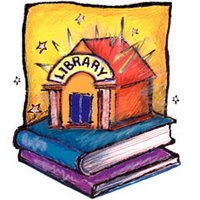Let's Explore Some Educational Blogs...
 While I have many links to blogs available on the side bar to the right, there are a few that I would like us to walk through together in this workshop. By exploring these sites, you may start to figure out what type of classroom blog you are interested in setting up. This is not by any means a comprehensive, end-all-be-all list. Blogs may be a hybrid of these types, or you may think of a way to use them that isn't part of this list.
While I have many links to blogs available on the side bar to the right, there are a few that I would like us to walk through together in this workshop. By exploring these sites, you may start to figure out what type of classroom blog you are interested in setting up. This is not by any means a comprehensive, end-all-be-all list. Blogs may be a hybrid of these types, or you may think of a way to use them that isn't part of this list. A blog may be used as an administrative tool to communicate with parents and students regarding class assignments and project expectations. One example of this is Mrs. Lindeman's Fourth Grade Blog. Another example of a blog that is used to publish weekly homework assignments is Mrs. Grit's Homework Blog.
A blog may be used as an administrative tool to communicate with parents and students regarding class assignments and project expectations. One example of this is Mrs. Lindeman's Fourth Grade Blog. Another example of a blog that is used to publish weekly homework assignments is Mrs. Grit's Homework Blog. A blog may be a forum used by students to publish what they've learned about a topic. Mr. Gates' 2nd Grade Blog is a great example of this type of student-centered blog. Currently, it looks like Mr. Gates' students are writing about what they know about butterflies and their life cycle. Ms. Kreul's Class Blog publishes this material through one blog author (Ms. Kreul). However, it appears that she allows students to assist in creating blog entries.
A blog may be a forum used by students to publish what they've learned about a topic. Mr. Gates' 2nd Grade Blog is a great example of this type of student-centered blog. Currently, it looks like Mr. Gates' students are writing about what they know about butterflies and their life cycle. Ms. Kreul's Class Blog publishes this material through one blog author (Ms. Kreul). However, it appears that she allows students to assist in creating blog entries. A blog may be used to publish classroom pictures and provide a safe portal for students to access internet resources pre-approved by the teacher. In this case, students do not comment to or publish posts, but rather use the site as an access portal. Ms. Nelson's Fifth Grade Blog is an example of this type of blog, as well as my own Mrs. Perry's Weekly Web Pics.
A blog may be used to publish classroom pictures and provide a safe portal for students to access internet resources pre-approved by the teacher. In this case, students do not comment to or publish posts, but rather use the site as an access portal. Ms. Nelson's Fifth Grade Blog is an example of this type of blog, as well as my own Mrs. Perry's Weekly Web Pics.
Duck Diaries is a second grade blog about a duck who decided to build her nest in the playground of a k-8 school. It recently won the special Edublog Star Award. Duck Diaries allows second grade student work, ideas, and comments to be shared with a greater community.

Older Blog: Mr. Sprankler's Room 208 is doing an amazing job of integrating technology into the classroom. Each student's blog is networked to the main class page. Students can write and comment on each other's work. In addition, this class also participates in Podcasting, a process where the class lessons/discussions are recorded (by the 3rd & 4th graders) and posted on-line as a resource. Additionally, there is a Poetry Blog, a blog for teachers, a classroom journal, and many other integrated sites. This is truly an example of a technology-enhanced classroom.
My classroom blog has many diverse purposes. First, it organizes links to internet sites that I have approved for use in my classroom. Students know that a site must be previewed by me and added to our blog before they have permission to access it. Along with these links are specific sites chosen to help teach my students about Internet safety. Secondly, I have invited guest experts that the students may interact with and ask questions of. Some of these experts are direct tie-ins to CCPS curriculum (for example, we write to a retired astrophysicist who worked on the Hubble Space Telescope and a veterinarian), while others serve to give students access to a broad range of potential career choices, enhance their exposure to different resources, and give them a chance to see how important an education is when pursuing career goals (currently we're writing to a Broadway musical star and an aeronautical engineer who went to PAX River's test pilot school). This also allows me to integrate students' families into the classroom experience under my direct supervision. My classroom blog's third purpose is to provide an online space for students to write about what they learn in the classroom. Whether it's Calendar Math, literature circle questions, exploring poetic devices/figurative language (for example exploring idioms or alliteration), or expanding student vocabulary, my students can share their ideas with me and each other. Inaddition to interacting in an online environment, we also post pictures to share. Remember, since a blog may act as an interface with the outside world, student names are never paired with student pictures. The last purpose of my classroom blog is to to allow students to share their work and projects. This is a recent addition. I host student projects on my own webspace and then link the blog directly to the Acrobat Reader, PowerPoint, or other formatted file that contains the students' work. Currently, I've posted students' Endangered Species PowerPoint Presentations online. To see the Web Quest I put together to guide them through this process, click here. Additionally, I've posted work that students have created in the classroom and scanned into Photoshop using our classroom scanner.
Blogs have other uses outside of the classroom...
 A blog may be used by a school's PTA to keep the school community abreast of current and upcoming events. One example of this is Square Barn Elementary's PTA Blog or St. Leonard's PTA blog.
A blog may be used by a school's PTA to keep the school community abreast of current and upcoming events. One example of this is Square Barn Elementary's PTA Blog or St. Leonard's PTA blog. A school's principal may also utilize a blog. Some examples of these are the Principal's Blog of Avoca Elementary School, the Principal's Blog of Pearson GT Magnet School, and the Principal's Blog of Garden County Elementary School.
A school's principal may also utilize a blog. Some examples of these are the Principal's Blog of Avoca Elementary School, the Principal's Blog of Pearson GT Magnet School, and the Principal's Blog of Garden County Elementary School. Libraries are utilizing blogs as an easily updatable website. A blog can "potentially transform a static Web site into a dynamic Web site, by creating more movement." Libraries may:
Libraries are utilizing blogs as an easily updatable website. A blog can "potentially transform a static Web site into a dynamic Web site, by creating more movement." Libraries may:1. use blogs to announce books or events
2. use blogs to review books and databases
3. share tips for how to use the library or the databases
4. create on-line discussion groups
CCPS's own Huntingtown HS's Media Center's Blog is one example of a library blog. Recently, St. Leonard, Mutual, and Sunderland have started using blogs to communicate to their school communities. An example of an elementary school's library blog may be found at Ashland Elementary School.
This past fall, my brother-in-law went on a three week trip to Japan as a Fulbright scholar. His blog, Mr. Perry's Fulbright Experience, allowed his students from Richard Montgomery High School (MCPS), family, and colleagues, a chance to stay up-to-date as he immersed himself in the culture and experience of teaching in Japan.
 Hopefully you now have a better understanding of some of the ways blogs may be used to enhance the both the school and classroom climate/environment.
Hopefully you now have a better understanding of some of the ways blogs may be used to enhance the both the school and classroom climate/environment.


